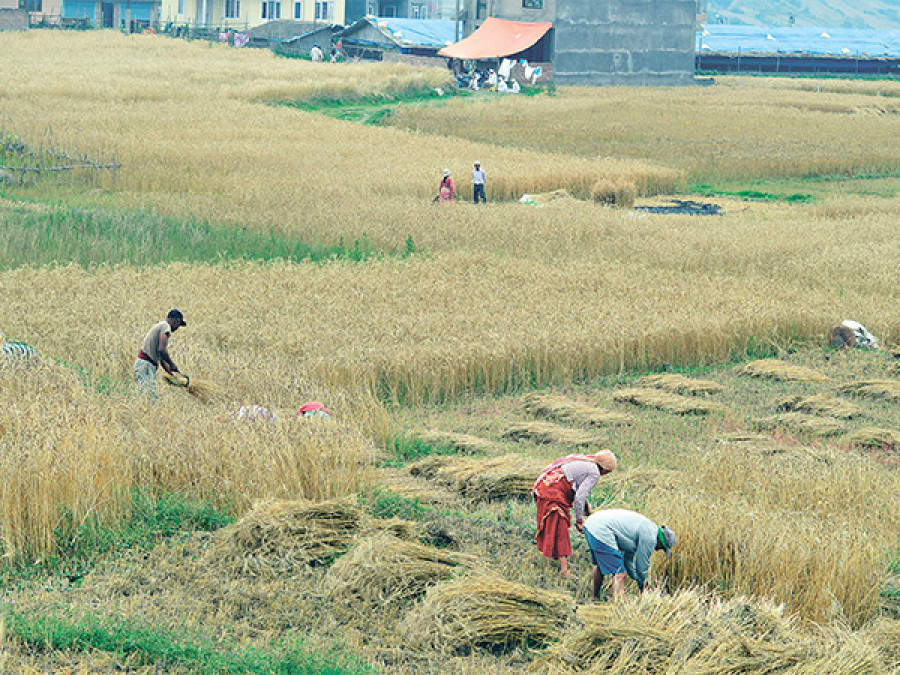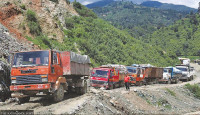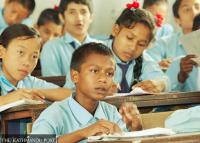Opinion
Save the soil
Without urgent action, the quakes could destroy long-term livelihoods of millions of subsistence farmers
Tejendra Chapagain
Nepal, a country where more than 85 percent of the people in rural areas depend on agriculture, was hit hard by a deadly 7.9 magnitude quake followed by more than 200 aftershocks. Rural farm families suffered greatly, as many lost family members, houses, livestock, heritage seeds, and farm assets such as granaries and tools. The calamity has affected more than 8 million people in the mid- and high-hill districts, regions that already suffer from food deficits. According to the Food and Agriculture Organisation (FAO), 3.5 million people are in dire need of food assistance due to the displacement and destruction of agricultural assets caused by the earthquake.
There are mounting concerns that the loss of lives, livestock, seeds, and infrastructure will have a severe impact on agriculture, leading to a serious food deficit in the affected areas and increased levels of malnutrition, hunger, and many health-related consequences. The areas hit by the earthquake include the settlements of several ethnic and minority groups, particularly those of the ‘lowest’ caste (Dalits) and indigenous peoples, who are more prone to the long-term impacts of this catastrophe. A higher concentration of mass poverty, food insecurity, unemployment, and illiteracy in the hills and mountains make their situation more vulnerable and may lead to temporary or permanent migration from the affected areas.
In this situation, Nepal needs enormous support from governments and international agencies to revive agricultural activities and rebuild rural infrastructure. There are obvious emergency interventions required (eg, food and shelter), but the smart selection of materials will not only provide short-term relief but also restore and improve long-term farm productivity. In particular, the materials provided should be reusable, inexpensive, compact and lightweight, easily available, and accompanied by step-by-step illustrations on how to use the products, especially in areas with a greater number of illiterate people. Illustrations can also explain to farmers how to re-purpose relief materials into farm implements, to create long-term benefits to livelihoods.
The following materials are useful while supporting disaster-affected families in their efforts to revive agriculture and maintain biodiversity on farms.
Grade plastics
Immediate support of agricultural grade soft plastic would allow people to make their own tents using local wood as poles, wrapped around as a single piece to make it waterproof. It can be used for animal shelters, to replace collapsed roofs, and for covering food grains and long-term seed stocks. Plastic sheets can protect precious seeds that are stored in damaged homes or broken mud granaries from the monsoon rains, which will otherwise lead to the loss of livelihoods and generations of knowledge. The side or the roof of the tent can be modified for rainwater harvesting when water is scarce. This plastic can be repurposed later as a greenhouse during the cold season to protect high-value vegetables against insects, as a shade house for young seedlings, or as groundcover to suppress weeds in home gardens. The estimated cost is Rs 1,000-2,000 per family.
As already noted, when structures collapse, the rain might damage precious seeds normally stored within homes or mud granaries. Low oxygen grain storage bags (also called hermetic storage bags) consist of a thick three-layer plastic that allows oxygen to flow out, but not back in, thus preventing fungus or insects from damaging stored grain. This bag is very inexpensive (Rs 100 per bag) and reusable.
Shovels and seeds
Waterproof gardening gloves and shovels are needed to clear debris, which can then be re-purposed to reduce hardship in agriculture. Gloves costing Rs 50-100 will prevent injury and can be re-purposed to help men and especially women reduce the hardship of manual farm labour (eg, collecting wood, removing weeds, working with ploughs). Similarly, a military trenching shovel that is commonly distributed to armies around the world is a multi-purpose tool (shovel, hoe, wood saw) that is lightweight, inexpensive, folds to be compact for transport, and can be procured rapidly on a large scale.
There may be short-medium term hunger due to an influx of family members or because stored food was damaged. Seeds of early-to-mature crop varieties of cereals, legumes, and vegetables can be provided or sold to farmers. Care should be taken while choosing crop varieties so that they are compatible with the growing season and location. An accompanying small bag (5-10 kg per household) of nitrogen fertiliser is likely to raise crop yields rapidly, especially if livestock, the source of manure, have been killed. However, priority should be given to villages accessible by road as fertiliser is heavy. If funds are available, then in the longer term, families who lost their livestock can be supported with small livestock such as goats, piglets, and/or a brood of chickens to maximise manure and urine collection as sources of organic manure.
Livestock are also a major source of labour in rural areas. In this situation, where there is a shortage of labour due to the death and injury of humans and livestock, or tools have been lost due to building collapse, it is essential to provide or sell an inexpensive set of tools/equipment to reduce farm labour. A jab planter (adjustable for various seed sizes to permit planting of grains and legumes) allows one person to sow seeds without livestock, and a set of local digging tools (eg, spade or hoe, rake, sickle) may serve to compensate for damage to traditional tools. The estimated cost is Rs 1,000-2,000 per household, but these tools can be shared.
Smart funding
These materials can be purchased inexpensively, ideally locally, but if needed via wholesale online marketplace, to prevent price spikes in the short term, which has already happened with tarpaulins. The distribution of products to remote communities is the most difficult challenge in mountainous Nepal, but one can employ preexisting private sector vendors, who sell snacks, alcohol, and cigarettes, to run stalls in even the most remote communities.
This is the time to call on governments and international agencies to dedicate funds for smart and well-defined disaster relief for subsistence farmers, who are often overlooked in these circumstances.
Chapagain is a Research Associate at the Department of Plant Agriculture at the University of Guelph, Canada, and project coordinator for SAKNepal




 23.12°C Kathmandu
23.12°C Kathmandu










